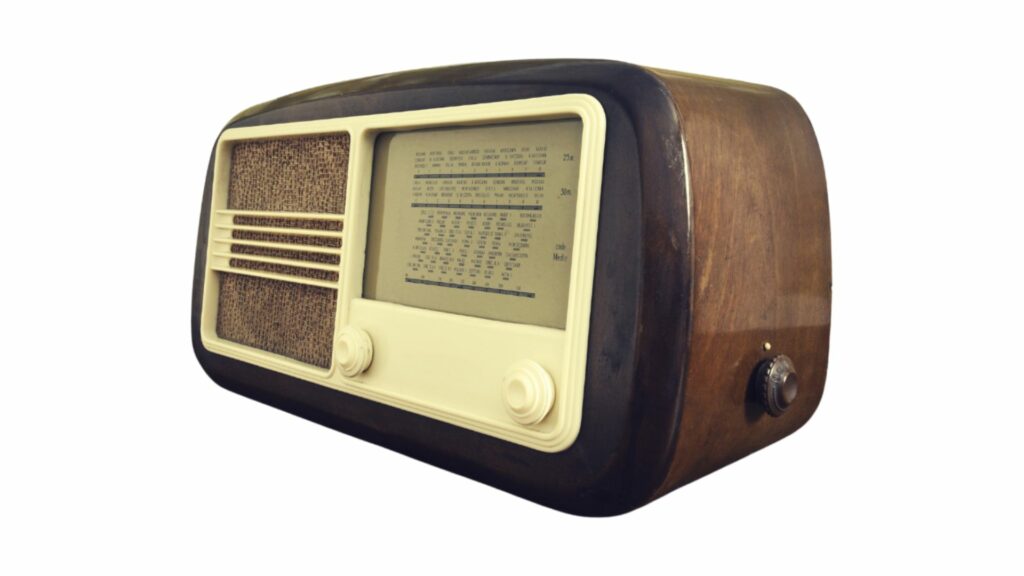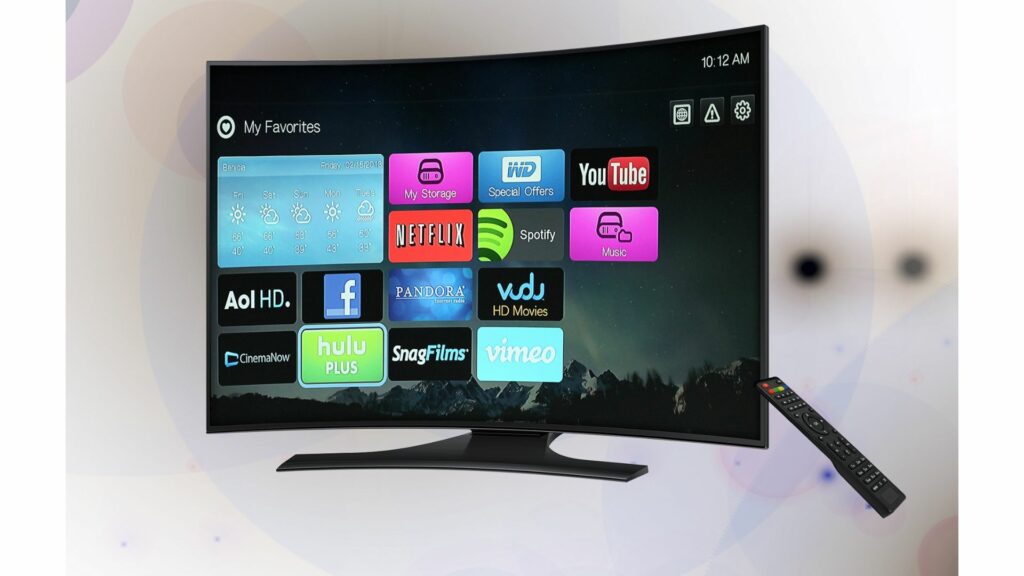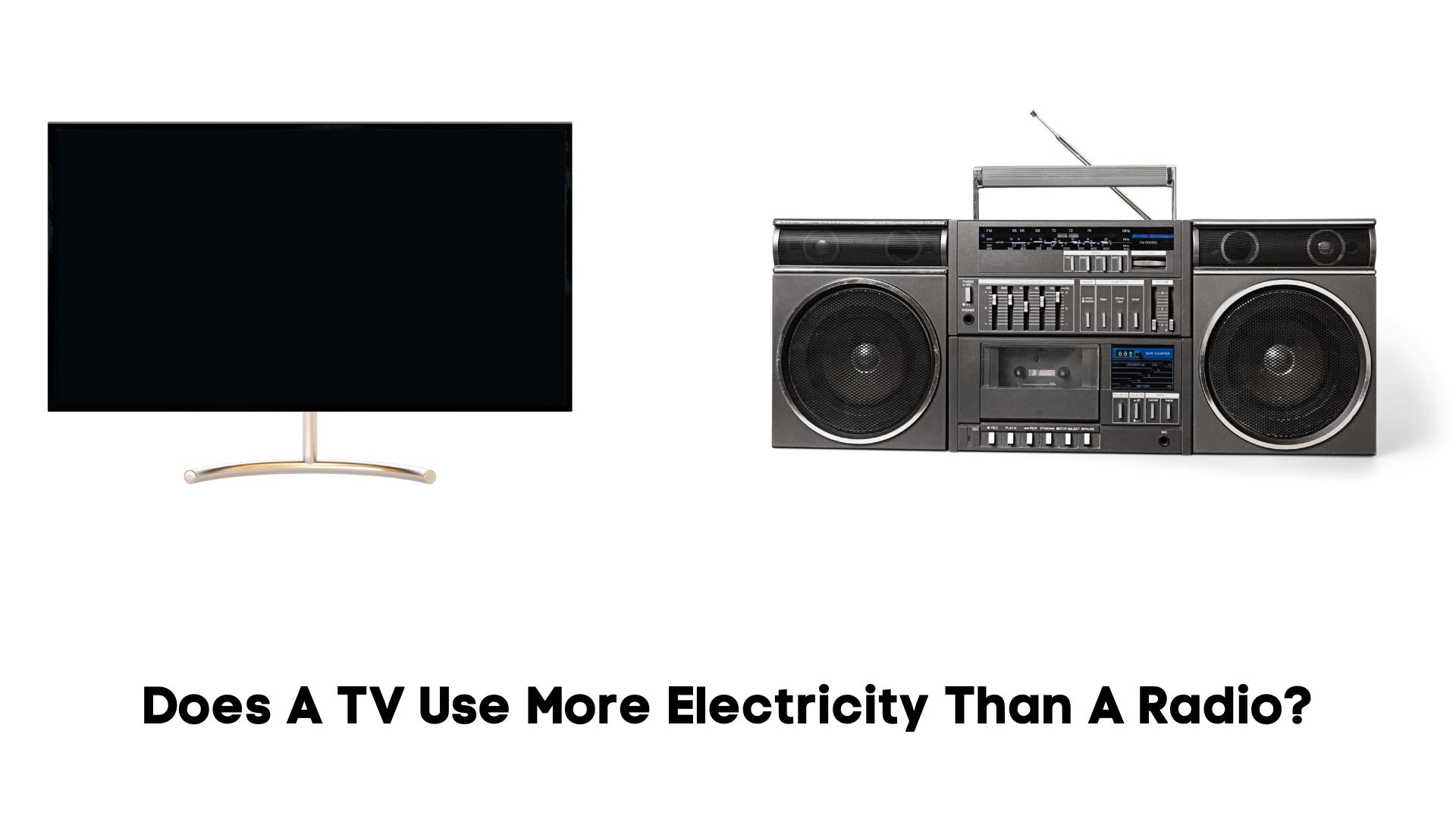Even though everyone has a TV these days, radios are still popular, which begs the question. Does a TV use more electricity than a radio? The guide below will tell you.
| Wattage | Cost Per Hour | Cost Per 24 Hours | Cost Per Month | |
| TV | 170W | $0.0170 | $0.4080 | $12.41 |
| RADIO | 10W | $0.0010 | $0.0240 | $0.73 |
The table above makes the following assumptions:
- The radio uses 10 watts. The TV uses 170 watts.
- The power company charges $0.10 per unit.
- You use the TV and radio 24 hours a day.
TVs and radios have stickers that tell you how much energy they use. Every TV in your home has a higher wattage than every radio you own. This fact is difficult to dispute. When it comes to comparing the energy consumption of radios and TVs, you should keep the following in mind:
1). The procedure that calculates a TV’s energy consumption will also show you a radio’s energy consumption. This involves multiplying the radio’s wattage by the number of hours you use the radio and dividing by 1000 to get the kWh. Multiplying the radio’s kWh by the cost per unit will show you the amount you spend on your radio within a given duration.
2). TVs are obviously larger. They use more power. A TV will consume 100 or more watts. On the other hand, cavcom expects a simple radio to use 0.5 to 5 watts, which is minuscule.
According to one BBC study, their radio operations utilize 1 percent of the United Kingdom’s electricity per year, which is much lower than many people expect when you consider the organization’s reach.
3). Interestingly, the BBC found that their FM platform had the biggest footprint, higher than DTV, DAB, and AM. But you can blame those figures on consumption patterns. After all, FM’s listening hours are 11 times higher than those of AM and DTV. When the BBC looked at each platform’s energy intensity, DTV had the largest footprint.
4). Plans to shift to DAB have been underway for quite a while. The Guardian published an article in 2009 in which they explored the government’s intentions to turn off FM radio frequencies, replacing them with DAB digital radio signals.
Some people resisted the concept despite the signal clarity it promised because analog radios are extremely light-duty, consuming an average of two watts. Their digital counterparts use more than four times as much electricity.
Therefore, you would expect environmentally conscious governments to prioritize analog radios because they save energy. At the very least, they have a good reason to reject energy-hungry digital radios.
However, digital technology continues to evolve, becoming more efficient with each passing day. The British government published papers in 2011 which noted that a tabletop DAB radio’s energy consumption had declined (from 5.84 watts to 4.78 watts).
Additionally, portable DAB radio energy consumption had fallen from 4.68 watts to 3.14 watts. Therefore, DAB radios are not necessarily a threat to your wallet. More importantly, even at their worst, radios are still weaker than TVs.
The Energy Savings Trust published the results of a study showing that radio has an annual average energy consumption of 35kWh. That figure jumps to 658kWh for plasma TVs.
5). Radios are cheaper. Therefore, you have more of them in the world. Families that can’t afford TVs own multiple radios. However, in a home with both technologies, one TV set uses more power than multiple radios. Keep in mind that the average household owns multiple TVs.
Therefore, you must conclude that a TV uses more electricity than a radio.
Factors That Affect Energy Consumption
Radio

- Radio Type
As you now realize, traditional analog radios use less energy than their digital counterparts. A digital radio’s energy consumption is still lower than what you find in television sets. However, if you want to lower a radio’s energy consumption even further, you should select cheaper, less sophisticated models.
The more sophisticated the radio type, the more power they use.
- Medium
What medium are you using to listen to the radio? Many laypeople associate radios with specialized devices that receive signals from radio stations. But what about your phone? How many of you listen to the radio via an app on your phone?
What about the TV? How many times have you listened to your favorite radio program through the speakers of an OLED TV? The medium makes a significant difference. Streaming a radio program on your phone through the internet will consume more energy than listening to that same program on an actual radio.
The same is true for the TV, tablet, smartwatch, and every other device you have on hand. The cheapest way to listen to the radio is through an analog device.
- Usage Pattern
Some people use their phones to listen to the radio because of the convenience. If your phone is always in your pocket, you can listen to the radio 24/7. But that means your energy consumption will increase.
The more radio you listen to, the more power it will use. You can limit your energy consumption by using a traditional analog radio.
TVs

- TV Type
LED, LCD, and OLEDs are the most energy-efficient TV types on the market. Any TV type outside these three categories should concern you. Inefficient types, such as plasma, use too much electricity.
- Screen Size
Large flat-screen TVs are all the rage these days. People don’t realize that such TVs use more energy to fill their screens.
- Usage
How frequently do you use the TV? The more use the TV gets, the more current it will consume.
- Brightness
The brightest screens are the most appealing because they generate beautiful images with vivid colors. Unfortunately, they also use the most energy.
Tips For Reducing Energy Usage And Saving Money On Electricity Bills Using TV And Radio
1). Don’t buy a bigger TV than you need. You should also keep the resolution in mind. Screens with the highest resolution use the most energy. Don’t buy a 4K TV when a 1080p screen is sufficient.
2). Buy traditional analog radios. Prioritize radios that don’t offer any additional features. These models use the least amount of energy.
3). Look for radios and TVs with a favorable energy rating. The more stars you see, the more energy-efficient the device is.
4). Technically, you use more energy to listen to the radio on the phone or TV. But since you’re going to use the phone and TV all the same, it might actually be more cost-effective to use a device that combines multiple functions. For instance, a phone that allows you to watch TV and listen to the radio. This is more efficient than owning three separate devices that you’re more likely to run simultaneously.
5). Switch the TV and radio off when these devices are not in use.
6). Don’t leave these devices in standby mode. Turn them off completely.
7). With radios, older models use less energy. TVs are the opposite. Older TVs use too much power. Replace them with newer, more efficient models.
8). Use the energy-saver mode. This mode reduces the energy consumption to the lowest point without compromising the device’s operations.
Related post:

